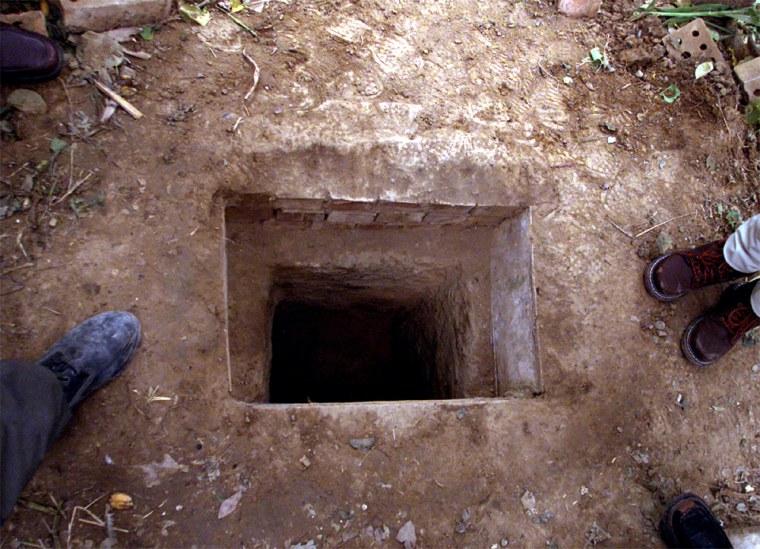U.S. Special Forces soldiers were seconds from pitching a hand grenade into Saddam Hussein's tiny underground refuge Saturday when the fugitive dictator's hands appeared above ground in surrender, the U.S. commander who led the raid said Monday.
Col. James Hickey, 43, said Monday as he recalled the capture that U.S. forces began in July to assemble the evidence and intelligence that led to Saddam's capture in a spider-hole dug into a farmyard near his hometown
"He was assisted out of the hole," said Hickey, commander of the 1st Brigade, 4th Infantry Division. Saddam was armed with a pistol, but he chose to surrender, identifying himself in English and asking to negotiate.
The story of Saddam's arrest is woven of many threads, many involving Hickey and his men, who had been conducting regular raids in and around Tikrit looking for Saddam since midsummer.
Beginning then, the 43-year-old Chicago native's brigade rousted some of Saddam's relatives in Tikrit. Some had been financing the insurgency that was just heating up against the U.S. occupation. Others had been active combatants in the guerrilla war.
Each captive's interrogation added a chink of evidence that ultimately lead to the arrest of former Iraqi dictator. But the time crawled between the start of the hunt and the successful raid Saturday. Hickey called it the "mother of all raids," borrowing Saddam's terminology that labeled the 1991 Gulf War the "mother of all battles."
Hickey said Saddam's exact whereabouts were unclear until Saturday morning despite the ever-tightening circle.
"On Saturday at 10:50 [a.m.], I received a call from a comrade who told me that they got a man in Baghdad. We brought that person to Tikrit for an interrogation and that made us clear Saddam was somewhere here," Hickey said. Saddam was captured about 8:30 p.m. (12:30 p.m. ET).
"That guy [captured in Baghdad, but not identified] was really crucial for us."
Not on original list of sites
The operation to grab Saddam — code-named Red Dawn — was aimed at two farmhouses dubbed Wolverine 1 and Wolverine 2. The fugitive dictator was caught at a third farmstead nearby.
"The most important thing was stealth and speed to shock and overwhelm the enemy," Hickey said. "We expected a bit of fight, and we were ready."
As the operation progressed, Hickey was in his command vehicle coordinating movements of the 600-strong force of infantry, cavalry, Special Forces, light artillery units, helicopters and combat engineers.
"We had intelligence that there would be an underground facility ... but we expected something better constructed, not something so humble," Hickey said.
Troops from the 4th Infantry Division sealed the area while Special Forces moved into the compound, found Saddam and pulled him out of the narrow hole after his hands signaled his presence and surrender.
Soldiers who searched the farmhouse and orange and palm groves found a white cloth that covered the entrance to the hideout. It shrouded a piece of plastic foam that served as a hatch for the underground hiding place. The foam had two wire handles and was painted to look like the soil surrounding the opening.
Next to a date tree beside the hole was an exhaust pipe that served as a ventilation shaft. Drying salamis and figs were hung on the pipe to disguise it.
"I felt a great sense of accomplishment," Hickey said.
